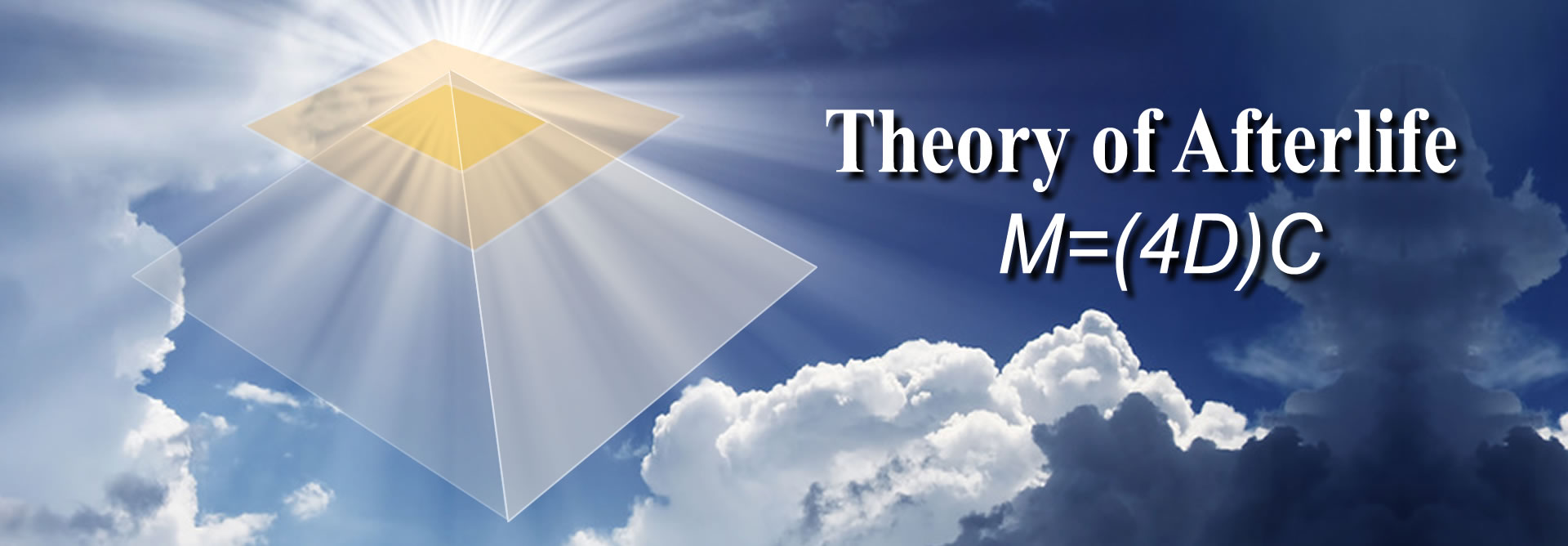Proof of Afterlife
Memory = (4D) Consciousness
Introduction
What happens when we die? This ancient question has driven spiritual, philosophical, and scientific inquiry for millennia. Afterlife Theory proposes a new model - rooted in geometry, consciousness, and firsthand human experience - that reframes death not as a cessation, but as a dimensional change of awareness. This theory begins with a simple but profound observation: consciousness is dimensional. It is capable of existing not only within the body, but beyond it. [Postulate 7]
The Dimensional Nature of Consciousness
In everyday life, consciousness is experienced as a point - a zero-dimensional self, localized in the body, typically behind the eyes or within the head. This point is how we define ourselves: limited, bounded, and centered. We perceive the world from this internal origin outward, through the filter of senses and memory. [Postulate 3]
But what if consciousness is not fundamentally bound to that point? What if it can change?
Out-of-Body Experience (OBE) as Dimensional Transition
The Out-of-Body Experience offers compelling evidence that such a change is not only possible - it happens. In OBEs, consciousness appears to exit the body and perceive the environment from a different spatial location. Countless verified cases describe individuals accurately observing scenes they could not have witnessed from their physical vantage point.
Afterlife Theory interprets this as a dimensional change of awareness - from 0D (point) to 3D (space). During an OBE, the ego detaches from the body and expands into the space around it. The experiencer becomes spatially aware without the need for a physical sensorium. Consciousness no longer resides inside the body; it becomes the surrounding space. [Postulate 2]
Importantly, these experiences often arise from severe trauma - cardiac arrest, near-death states, or extreme deprivation - conditions that place the body perilously close to death. This suggests the mechanism that enables dimensional transfer is biological dissolution, or the temporary disconnection of mind from brain.
Death as Full Dimensional Change: From Space to Spacetime
If OBEs are transitions from 0D to 3D, then death itself must be a further progression: a transition into 4D - space and time as a single continuum.
This aligns with accounts from near-death experiences, where time no longer flows linearly, and life events unfold simultaneously. People describe seeing their entire lives at once, communicating instantly, and existing outside time. Afterlife Theory interprets this as the completion of the dimensional change: from self-as-point, to self-in-space, to self-in-eternity.
Thus, the afterlife is not annihilation - it is transformation. Consciousness expands from the internal point to the totality of space and time. The self is no longer "in the body" or even "in the moment," but part of a timeless dimension where all of space and all of time are accessible. [Postulate 8]
Why Science Struggles with Afterlife
The greatest obstacle to scientific investigation of this phenomenon is ethical: true OBEs are most reliably induced by experiences that bring a person near death - a line researchers cannot cross intentionally. While technologies like VR, psychedelics, or meditation may mimic aspects of dimensional change, they rarely achieve the clarity or verifiability of trauma-induced OBEs. This makes the phenomenon both empirical and elusive.
Still, the consistency of OBE and near-death reports across cultures and ages points toward something universal. These are not mere hallucinations; they are dimensional events.
Conclusion: A Theory of Transition, Not Termination
Afterlife Theory offers a new model: death is not disappearance - it is dimensional evolution. Consciousness, confined during life to a point within the body, detaches during trauma or death and expands into the surrounding space (3D) and ultimately into timeless existence (4D). [Postulate 6]
This theory does not require supernatural belief, only recognition of the geometry of awareness. If true, it reframes death from an end into a re-entry into reality at a higher dimensional level - where consciousness persists not in the brain, but in the very structure of space and time itself.
